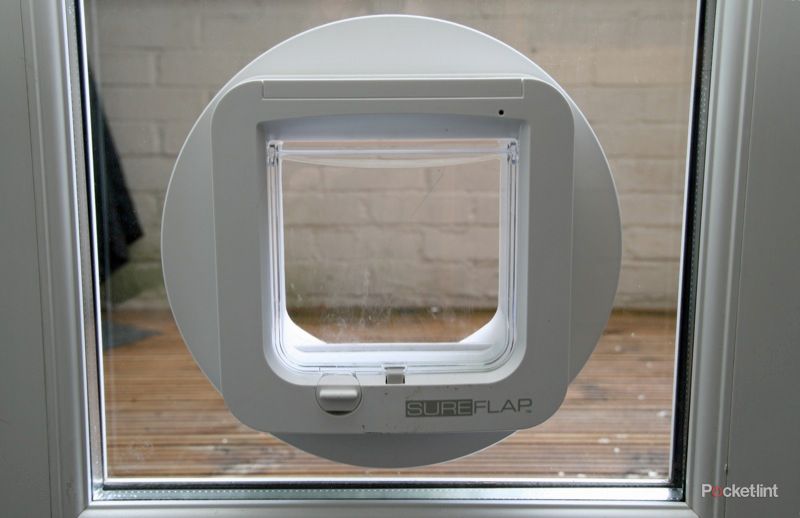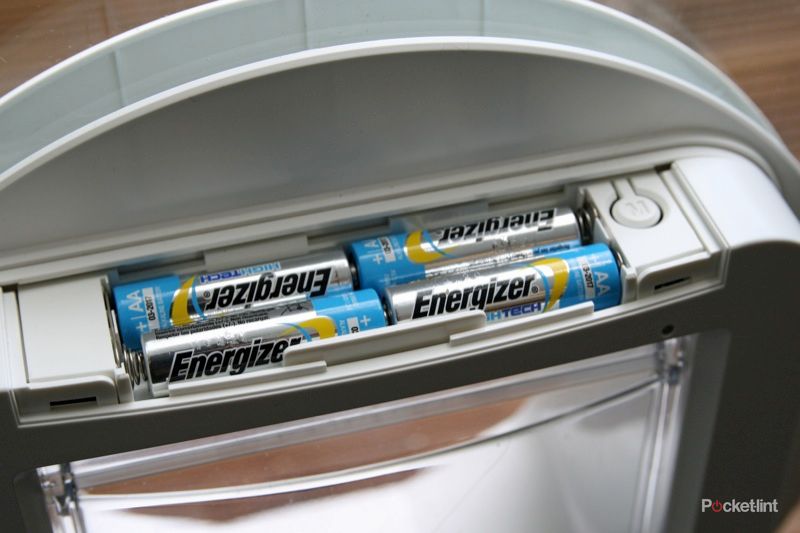It's 3am when you are wrenched from your slumbers. A yowling and hissing mess of fur and claws is rolling around your house, fighting with everything in its arsenal. You stagger into the fray, waving your leather slipper, ready to put to the offending beast, which makes good its escape. The last you see is its fluffy tail sinking into the darkness: you know he'll be back. Such is life on the suburban front line, where cat war wages unseen, but rarely unheard.
Our quick take
Your average cat flap will cost you about £15-20, so paying £81.99 might seem a little steep. There is no avoiding the fact that you are paying for the technology here. But when you have other cats or animals entering your house in the middle of the night and staging battles up and down the stairs, you aren't paying for a cat flap, you are paying for a good night's sleep – and what price can you put on that?
If you have a problem with unwanted animals entering your house, then the SureFlap will sort that out for you. Installation in place of an existing cat flap is a simple 5-minute job and thereafter your problem is solved. The fact that it supports existing microchip standards is important as it saves you the hassle of needing a collar or anything else.

SureFlap microchip cat flap - 4.5 / 5
| FOR | AGAINST |
|---|---|
|
|
Normally a humble cat flap wouldn't grace the pages of Pocket-lint.com, but when it is a vision of the future, you have to take note. That's because this isn't just a cat flap, but one that uses RFID. The idea is simple and an evolution over other locking cat flaps, which often rely on a sensor mounted on a collar. If you have a wild monster of a cat, you might not be able to get him to wear a collar, but there is little he can do to avoid being microchipped by the vet.
Out of the box you are presented with a solidly constructed cat flap, slightly thicker on the indoor section to accommodate the 4x AA batteries that are needed to power the device. Otherwise it is conventional in its design, with a central tunnel to allow you to mount it in a variety of locations.
We opted to mount it in a double-glazed window unit with a pre-existing hole for a cat flap. This hole was for a regular Staywell cat flap, so with a hole diameter of 210mm, we found the SureFlap fit with no problems. When mounting in a window there is an adapter you can (and should) use, as the SureFlap main unit is square and the hole will be round – the adapter adds a round flange so there are no gaps.
Fitting is simply a case of assembling the unit around the hole of choice and putting two screws through to hold the whole lot together. Adding a dab a clear silicone sealant is recommended to give a waterproof seal and inhibit any movement.
So fitting is easy – what about the microchipping part? Well, SureFlap uses existing microchips, so if your pet has been "chipped" by your vet, there is a high probability it will work. Our test cat was chipped 5 years ago using a Petlog chip. The SureFlap supports 9-, 10- and 15-digit microchips and if you are in any doubt, it's worth contacting the company before you purchase to be sure it will work.
Insert the batteries, locate your cat and you are ready to handle the technical part of the installation: tell the flap which cat to let in. Next to the battery bay is a single button. One press of this and the SureFlap goes into learning mode, blinks a red LED, the flap is unlocked and it will remember the first cat that passes through. We positioned our test cat on the outside, closed the door and pressed the button. After a great deal of sniffing and shooting us suspicious looks, the test cat stepped through the SureFlap, registering his chip.
When the cat passes through, the sensors inside the tunnel scan the microchip and determines whether that can is authorised entry. If it is, the latch is released and the cat can pass through. If not, the flap remains locked. It identified our test cat with no problem on the first pass. If you want to remember more cats, you'll have to return the SureFlap to learning mode and wait for other cats to pass through.
It will remember up to 32 cats, so if you run some sort of cat correction institute you'll be able to control your inmates. If you are a regular one- or two-cat household, we'd recommend you stage the learning process by positioning your cat outside and tempting them in so you know they have been learnt. You can reset the flap if you accidentally register the neighbour's cat, but if you watch the process that won't happen.
The SureFlap only restricts entry to the house, so if an alien cat jumps in through the window it can still exit through the flap. In addition, you also get a standard 4-way locking dial (in only, out only, neither in or out, free movement) just as you would on other cat flaps.
Due to the nature of the SureFlap's lock, there are some moving parts here. The latch moves with a mechanical click and we found that we could hear it in an adjacent room. We don't mind knowing that the cat is coming and going, but it did take the cat a little while to get used to that noise as it happens when he is in the cat flap. Nervous cats might be scared off.
The batteries are cited to last for 6 months and we haven't had the chance to test this claim, but a low battery indicator will remind you to replace them, as you wouldn't want to lock you cat out because you run out of batteries. If you decide you no longer need the access restriction (or get a new cat with no microchip) you can set the SureFlap to operate like a standard cat flap.
If we have any criticism, we'd like the flap hinge to be a little more substantial. If an excited cat breaks it, it can be replaced, but you'll have to disassemble the unit to swap it out.
If you aren't convinced by what you've read, check out Stuart's quick video below from when we first saw the cat flap.
To recap
If you have a problem with unwanted animals entering your house, then the SureFlap will sort that out for you. Installation in place of an existing cat flap is a simple 5-minute job and thereafter your problem is solved. The fact that it supports existing microchip standards is important as it saves you the hassle of needing a collar or anything else

